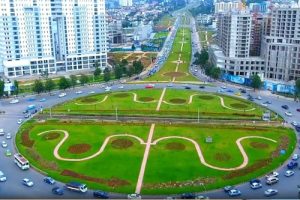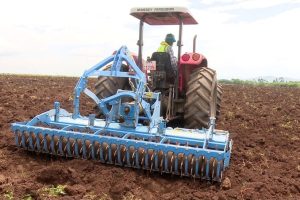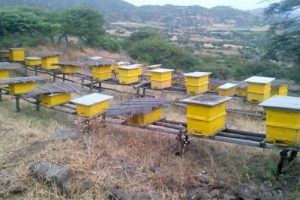
South West Ethiopia Regional State is known for its abundant natural resources and possesses immense potential for driving economic growth and development. The region boasts a wealth of minerals like gemstones, precious and semi-precious minerals, as well as significant coal reserves. These resources, if effectively hitched, have the capacity to not only transform the local economy but also significantly contribute to Ethiopia’s overall economic prosperity.
The abundance of mineral resources in the region holds great promise for driving economic growth in multiple ways. Attracting Foreign Direct Investment (FDI) and revenue generation, job creation, poverty alleviation, export diversification and foreign exchange earnings, infrastructure development as well as technology and knowledge transfer are among the benefits.
In order to discuss on the region’s immense mineral potential and success, the Ethiopian Press Agency (EPA) approached Deputy Director General of South West Ethiopia Region’s Mining and Energy Development Agency and Head of the Mining Sector, Mengesha Medalcho.
According to him, the region is blessed with abundant natural resources such as water bodies, minerals and forests with natural spices and supportive of honey production that have garnered attention from both local and international investors. The region is known for its diverse range of coal production, gemstones and other minerals.
He said that following the government’s belief that the mining sector contributes greatly to the country’s economy and mining works are being done to exploit the region mineral resources including extracting of coal which can be used as input for industrial power generation, he noted.
He further said that a processing machine that can increase the quality of coal is being installed in Dauro Zone. In addition, enabling environment is created to start large-scale coal production, which is a potential means to create job opportunities for the unemployed.
Kaolin, granite, marble and limestone which can be used as inputs for ceramic production are also widely available in the region. In order to develop these minerals, investors are obtained production license stage and soon will start production.
He further elucidated that the region is rich in minerals that can be used in the construction sector.Accordingly, sorting of marble, granite, limestone (as it is used for building and wall covering) and other minerals is underway, he asserted. Iron and ferrous minerals are also among the minerals found in the region. “Therefore, the investors who have obtained permission for exploration work in the Dauro zone, Konta and Keba corridors in the region are getting ready to start production.
In addition to these, the local people who extract iron and ferrous minerals in the traditional way have been given permission and started their operation.”
Southwest Ethiopia is a place where precious and semi-precious minerals are available.
He further highlighted that gold, opal and gemstones are available in the region. These minerals, with their diverse values in various industries, present opportunities for economic diversification and job creation. “By encouraging environmentally friendly mining and providing infrastructural facilities we can unlock the potential of these minerals and attract both domestic and foreign investors,” Mengesha explains.
Gemstones, found in the region, with their attractive colors and pristine quality, hold immense value in both domestic and international markets. “Our gemstones have the potential to become a thriving industry, attracting buyers and investors from around the globe,” he asserted. He emphasized the need for cutting, polishing, and refining facilities within the region to add value to these gemstones and create a robust market chain that benefits local artisans and entrepreneurs.
The deputy director also announced that the gold mining process is now in a good condition as the government has paid attention to it and is supporting and monitoring it in an unusual way. Underscoring that opal and agate are among the precious metals found around the Benchi Sheko zone of the region, he accentuated that a private developer has obtained an opal mining license and is preparing to begin production.
“While two licensed private developers have been engaged in the development of marble in the western Omo Zone, the other two producers are engaged in the development of granite and limestone in Dauro zone,” he mentioned.
Noting that about 18 producers are engaged in the process of coal mining, the deputy director stated that currently many of them are in the process of exploration and investigation. He also mentioned that there are about 178 investors who showed interest to engage in mineral exploration and testing, adding that the issuance of new licenses has been suspended in order to inspect producers weather they are appropriately doing their job or not.
In addition to gemstones and precious minerals, the region holds substantial coal reserves.
Mengesha envisioned a future where coal extraction serves as a catalyst for energy generation and industrial development. “Through sustainable coal mining practices, we can foster the growth of the energy sector, reduce reliance on imports, and provide a stable power supply for industrialization,” he asserted. He also emphasized the importance of leveraging renewable energy sources in parallel to ensure a balanced and sustainable energy mix.
Regarding job creation in the mining sector, it is planned to create job opportunities for 3607 unemployed citizens in the first six months of the current fiscal year. To date it was possible to create job opportunities for 2711 citizens, he noted.
He keenly believes that the development of South West Ethiopia’s mining sector will be a game-changer for the region’s economy. “By capitalizing on our mineral wealth, we can create a ripple effect of economic growth,” he says with conviction.
He highlighted the direct employment opportunities in which mining operations offer to geologists, engineers, technicians, miners, daily laborors and actors in the value chain. Furthermore, he emphasizes the multiplier effect where mining activities spur the growth of supporting industries such as logistics, transportation, and service providers enabled to generate additional jobs and income.
Mengesha’s vision extends beyond job creation. He underscores the importance of community development and social well-being. “Through responsible mining practices and collaborative partnerships with local communities, we can contribute to education, healthcare, and infrastructure development,” he explains. By sharing the benefits of mining with the communities, the region can achieve inclusive growth, lifting people out of poverty and improving their quality of life.
Mentioning that region contribution to the national economy, he said that 15 kilograms of gold was sent to the National Bank in the first quarter of the current fiscal year, he revealed that due to the efforts of the regional government, it has now been possible to supply 22 kilograms of gold to the National Bank of Ethiopia each month.
In order to overcome challenges regarding the market linkage and other problems in the sector, the deputy director pointed out that research has been conducted to deal the matter and such studies can help to identify the amount of coal calories required by industries. Now most of the cement factories receive more than 6000 per/hit of coal. Through identifying this need, the necessary measures are being taken to create a reliable market connection.
All in all, South West Ethiopia’s mineral wealth, as highlighted by Mengesha, presents a remarkable opportunity for economic growth and development even at national level. The diverse range of gemstones, precious and semi-precious minerals, and coal hold the potential to create jobs, generate revenue, and fuel industrial growth. However, it is crucial to approach the exploitation of these resources with a commitment to sustainability, environmental conservation, and social inclusivity. Through implementing responsible mining practices, engaging local communities, and ensuring transparent governance, Southwest Ethiopia can unlock its mineral wealth while safeguarding the environment and benefiting its residents.
With strategic investments allocation in infrastructure, skill development, and economic diversification, the region can transform into a thriving hub of economic activity, contributing not only to its own growth but also to the broader prosperity of Ethiopia. As South West Ethiopia embraces its role as a mining frontier, it must strive for a balanced approach that maximizes the economic potential of its resources while preserving its natural and cultural heritage for generations to come.
BY HIZKLE HAILU
THE ETHIOPIAN HERALD FRIDAY 26 JANUARY 2024





